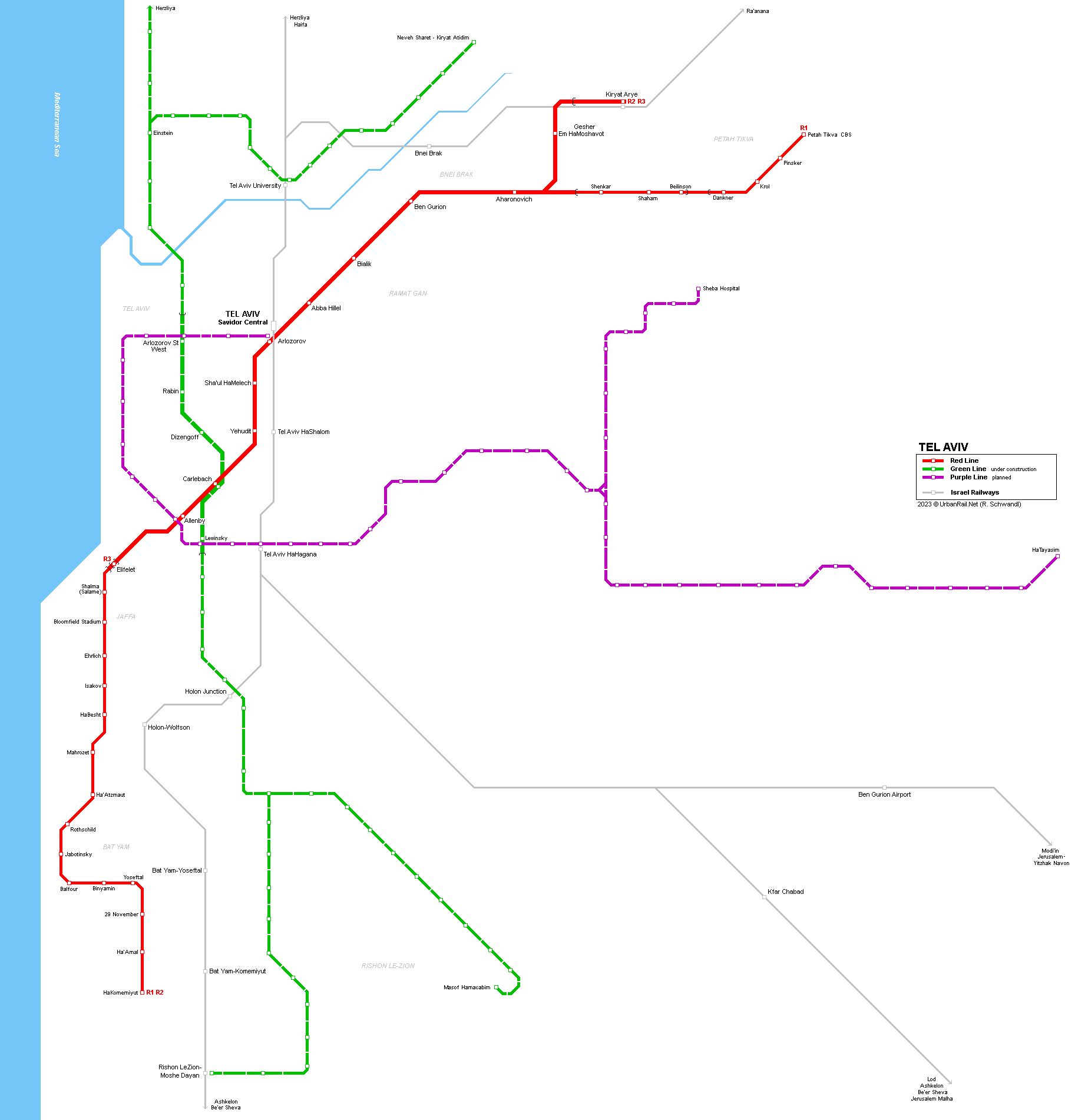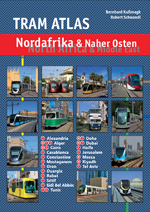
|
[ UrbanRail.Net ] [ Europe ] [ Americas ] [ Asia ] [ Africa ] [ Oceania ] [ News ] [ Books ] [ Links ] [ Blog ] [ Shop ] |
|
TEL
AVIV
|
| Israel |

| CITY |
|
The city of Tel Aviv is officially called "Tel-Aviv - Yafo". Modern Tel-Aviv was founded in the beginning of the 20th century by European Zionists near the very ancient port town of Yafo (sometimes called Jaffa in English), which was then inhabited mostly by Arabs (and it still is today). As the years passed, Tel Aviv had grown and essentially merged with other Zionist settlements, most notably Ramat-Gan, Bney-Brak, Holon, Bat-Yam and Hertzeliya. Today Tel Aviv is the center of Israel's most densely populated metropolitan area, called "Gush-Dan", which includes over 25 municipalities and is inhabited by more than 2.5 million people. Being Israel's most important business, cultural and industry centre, Tel Aviv is in urgent need of a modern public transportation solution. Until 2023, public transportation consisted mostly of bus service, which, although modern and rather well managed, is far from being perfectly suitable: the large buses go slowly through the narrow streets of old Yafo and central Tel Aviv and the heavy traffic at peak hours makes the bus rides even more painful. There's also a suburban railway, which essentially shares the infrastructure with Israel's inter-city railway, connecting Nahariya, Haifa, Tel-Aviv, Jerusalem and Beer-Sheva. In the late 90's this network was extended and upgraded to cover Tel-Aviv's suburbs Netanya, Hertzeliya, Bney-Brak, Petakh-Tikva, Kfar-Saba, Rosh-Haayin, Rishon-Leziyon and the Ben-Gurion International Airport. It is considered a great success, thanks to the high ridership numbers, but is still far from enough - most of the stations are not placed at convenient locations throughout the towns, and the train frequency is rather low (2 or 3 trains per hour). And most importantly, the large southern suburbs of Holon and Bat-Yam are not covered at all and entirely depend on buses and private cars. |
| LIGHT RAIL |
|
The need for a fast and frequent underground urban railway was realized already in the seventies, however due to various political and financial issues the planning process didn't begin until the late nineties, when the central government finally decided to give this project a high priority and the much needed budget. A government company called NTA was incorporated in 1997 (NTA = Netivey Takhbura Ironiim - Metropolitan Transportation Ways). NTA's job was to consolidate all the government tenders for planning and building the network. For planning the network, it partnered with LRTC and Lahmeyer from Germany, Parsons and PB from the USA, Semaly from France, HCG from the Netherlands, and several Israeli infrastructure companies. The government decided that the network would be financed and built according to the BOT model (build-operate-transfer): a private company will build the network and operate it for 32 years and then transfer it to government ownership, unless it will be decided otherwise by that time. Many infrastructure companies from abroad participated in the tender for building the network, including CCECC from China, RATP from France, BVG from Germany etc. It is interesting to note, that the two largest Israeli bus companies, Egged and Dan, are also competing for the right to build and operate the network. RED LINE The first line to be built runs from the central bus station of the largest eastern suburb Petakh-Tikva, to the west through Bney-Brak and Ramat-Gan into northern Tel-Aviv and then turn south to central Tel-Aviv, Yafo and Bat-Yam. The middle section of the line, from Bney-Brak until Yafo, will be underground and in Bat-Yam and Petakh-Tikva it will be more like a light-rail with several short tunnels along the way. There is a major transfer station at the Tel-Aviv Central - Arlozorov train station. The Red Line was once scheduled to be in operation in 2010, but it did not open until 13 years later: 18 Aug 2023: Bat Yam (HaKomemiyut) – Kiryat Arye / Petah Tikva Original
texts thanks to Amir E. Aharoni
|
 |
| Book |
 B
Bernhard
Kußmagk & Robert Schwandl: B
Bernhard
Kußmagk & Robert Schwandl:
TRAM ATLAS NORDAFRIKA & NAHER OSTEN | North Africa & Middle East 128
pages, approx. 150 colour images April /2025 |
| Links |
|
Green Line Project & Purple Line Project Tel Aviv Light Rail at Wikipedia
|
2005 © UrbanRail.Net by Robert Schwandl.